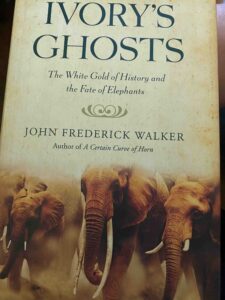Ivory To Sanctuary: PRP Building History, Tusks, Deep River Port
Note: More to come about the connections between wildlife and Deep River (perhaps Mondays at the Griswold Inn to see about some traditional music). This story has been updated and moved.
Who knew that threads of global maritime trade and history could be contained in a building to be explored?
And a related book that adds much to understanding Deep River, global business, human beings collecting things.
“A sheet of ivory, fourteen inches wide and *fifty-two feet* long, sawn from a single tusk, was sent by Julius Pratt and Company of Meriden, #Connecticut (one of the forerunners of Pratt, Read), in 1851 to the Great Exhibition at the Crystal Palace in London’s Hyde Park.”
📖… https://t.co/HyChPs6kHX pic.twitter.com/dR2rurtzM8
— Moo Dog Press (@MooDogPress) July 16, 2023
Finally, this documentary, viewed late at night after writing. Powerful stuff, stories. Connections across an ocean.
How we choose to remember. Seeing the beads found with burials stay with me. Recently watched and well worth review, A Story of Bones. How connected to the ivory trade and Deep River? The Middle Passage, the Transatlantic Slave Trade. All did not survive the journey.
Their bones speak to those who will listen.
PBS POV A Story of Bones “as Construction Environmental Officer for St. Helena's troubled airport project, Annina van Neel learns about an unmarked mass burial ground of an estimated 9,000 formerly enslaved Africans. Haunted by this historical injustice, she and African American preservationist Peggy King Jorde fight for their proper memorialization, exposing the UK's colonial past and present.”

